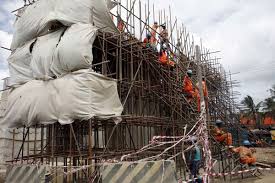An article of EastAfricanews
Mounting Public debt is forcing many countries in sub-Saharan Africa to cut development expenditure as part of fiscal consolidation measures, a reality that is threatening economic growth.
Global ratings agency Moody’s contends that slow growth in revenues is pushing governments to the undesirable corner of cutting down on development expenditure to meet runaway debt obligations to maintain positive credit profiles. While many countries are planning to consolidate budgets aiming to stabilise debt, they face potential negative economic and financing shocks due to weak fiscal positions.
The fact that expenditure cuts are often easier to implement than revenue-raising measures has left many countries in a dangerous trajectory where development could suffer in the event of shocks.
“In the event of shocks, scope to cut government spending rapidly and significantly, or spending flexibility, allows sovereigns to broadly adhere to their plans and lends resiliency to fiscal strength,” states the report.
Countries in East Africa are among those that have been on a borrowing spree to finance infrastructures projects resulting in a substantial surge in public debt.
In Kenya, the public debt currently stands at $51 billion and is projected to hit $60 billion by 2020 and $70 billion in 2022. In Uganda it stands a $10.7 billion and will hit $18 billion by 2022. In Tanzania, the debt has risen to $25.5 billion and could hit $30 billion by 2022.
The debt burden is increasingly exposing the region to shock considering that debt service-to-total revenue ratios are under pressure as governments struggle to achieve tax targets and the window for concessional loans narrows.
According to Moody’s, Rwanda is the only country in East Africa with a flexible spending structure, meaning that it has the ability to implement fiscal consolidation and reduce pressures on its credit profile in the event of shocks.
While Rwanda has borrowed heavily in recent years to finance infrastructure projects leading to an increase in external public debt to 37.5 per cent of GDP product in 2017 from 16.4 per cent in 2012, the country is at a low position of distress considering that donors fund only 17 per cent of its budget.
Source




